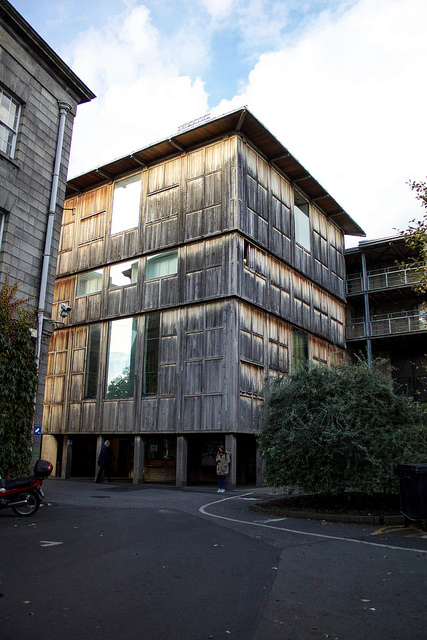Nothing by Lulu Raczka is the kind of play that comes about when John Hughes meets Samuel Beckett. Ursula McGinn’s Debut production is by turns bleak, humorous and unexpected. It is a performance forged from empathy for generation apathy.
In true post-modernistic spirit, the piece is set in a waiting room. The production is staged under two horizontal metal bars, each with a chain dropping from the corners, creating the impression of a cage. This impression is furthered by the degree of tension that each character expresses in their body language.
It begins with one girl, identified in the program as Stalker, alone in a pre-set on stage. As the audience filter into the auditorium, six more characters follow Stalker onto the stage. Film Lover appears later through the piece. Each character has been named based on characteristics, rather than given a conventional name.
Each of these characters are simultaneously hyperly self-aware and almost willfully blind. They choose to express themselves only in monologue. McGinn’s skill as a director saves the play from falling into the trap of becoming an amalgamation of monologues. Instead, the characters’ vocal lines vary between weaving together, interrupting one another and allowing each other to speak. The confession of each of the character’s deepest secrets is not acknowledged by the other characters. This succeeds in granting the production the intimacy of a diary while the set remains in a public space.
The setting of the production is a further question for debate. The set is decorated in the familiar monotone colour scheme of a waiting room. The furniture includes a water dispenser and several couches, supporting this impression. Yet each of the characters wears an orange wristband, a source of anxiety for each of them. The scenes are periodically interrupted by a harsh buzzing, a signal of some kind. References are made to therapists and doctors. The setting is therefore never concretely confirmed, but it is clear that all characters present are engaged in the act of waiting.
The piece does not sway from exploring the everyday uncomfortableness that strangers can experience with each other, capturing in minutiae the monotonous, skin crawling awkwardness of daily life. This attention to detail and willingness to display the unpleasant realities of everyday life holds the audience’s rapt attention through the piece. The characters, all strangers to one another, function as a kind of chorus, placing timing and context upon one another’s stories.
Although representing the chaos of human life, the piece itself is well ordered, transferring the focus between the darkly comic and the simply dark, in a timely manner. Subjects raised include (implied) rape, human feces and the symbolism behind strangers’ tattoos. The monologues are skilfully delivered, with a focus on an understated portrayal of some of the more extreme elements of human life. However, as with the setting, the true extent of the play’s themes are never fully vocalised. This performance is an exercise in evasive storytelling, just enough is revealed pique the audience’s curiosity, but no story is told in full. For a production that declares itself as Nothing this piece of theatre is certainly something.







